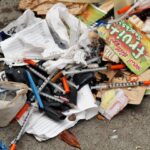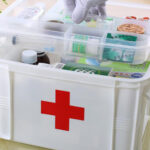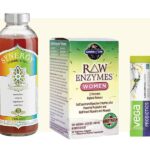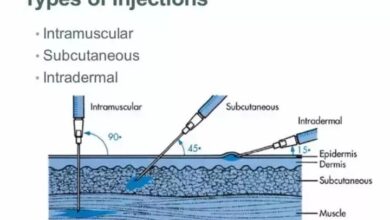How To Dispose Of Prescription and OTC Drugs
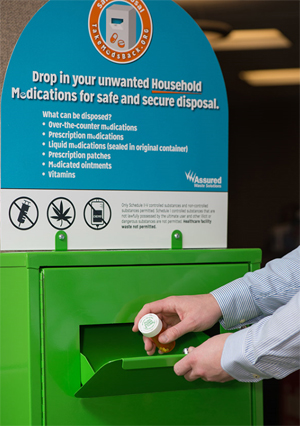
A prescription drug refers to a pharmaceutical drug that legally requires a medical prescription to be dispensed. In contrast, over-the-counter drugs can be obtained without a prescription. Proper disposal of all medication is an important aspect of medication safety and public health because improper drug disposal can lead to many problems for people and the environment.
Proper disposal of drugs can prevent the negative and toxic effects on our environment that can take place if the drugs are not disposed correctly. Safely disposing drugs can also prevent them from getting into the hands of people who shouldn’t have them.

Information on the FDA website indicates that The U.S. Drug Enforcement Administration (DEA) sponsors National Prescription Drug Take Back Day in communities nationwide. Many communities also have their own drug take back programs. Check with your local law enforcement officials to find a location near you or with the DEA to find a DEA-authorized collector in your community.
How to Prepare Medications for the Take Back Program
- Leave in original pharmacy containers, remove the label or cross off personal information, or
- Remove medications from pharmacy containers and place in a zip lock bag.
- Place medication in a designated drop-box.
Items Accepted:
- Prescription medications, including prescribed controlled substances (DEA Schedule II– V)
- Over-the-counter medications
- Liquid medications (small amounts in original, non-leaking containers)
- Medicated patches (Used Fentanyl and Duragesic® patches are extremely hazardous. They may be folded in half, sticky-side together, and flushed down the toilet.)
- Medication samples
- Medicated ointments
- Vitamins
- Pet medications
- Unused drug injection cartridges, e.g. unused EpiPens® and insulin pens (must be unused with needle still protected inside)
Not Acceptable Items:
- Marijuana
- Illicit drugs (e.g. DEA Schedule I drugs like heroin, LSD, etc.)
- Needles, syringes, and other sharp.
- Chemotherapy drugs
- Medical tools and supplies
- Bloody or infectious waste
- Personal care products
- Thermometers
- Empty containers
- Medication wastes generated by health care facilities, including nursing homes
You can also check with your pharmacist. Some pharmacies offer on-site medicine drop-off boxes, mail-back programs, and other ways to help you safely dispose your unused medicines.
How to Dispose Prescription and OTC Drugs at Home
When a take back option is not easily available, there are two ways to dispose of medicines at home, depending on the drug.
Flushing medicines: Because some medicines could be especially harmful to others, they have specific directions to immediately flush them down the sink or toilet when they are no longer needed, and a take-back option is not readily available.
How will you know? Check the label or the patient information leaflet with your medicine. Or consult the U.S. Food and Drug Administration’s list of medicines recommended for disposal by flushing when a take back option is not readily available. Remember, don’t flush your medicine unless it is on the flush list.
Disposing medicines in household trash: If a take back program is not available, almost all medicines, except those on the FDA flush list (see below), can be thrown into your household trash. These include prescription and over-the-counter (OTC) drugs in pills, liquids, drops, patches, and creams.
Follow these steps:
- Remove the drugs from their original containers and mix them with something undesirable, such as used coffee grounds, dirt, or cat litter. This makes the medicine less appealing to children and pets and unrecognizable to someone who might intentionally go through the trash looking for drugs.
- Put the mixture in something you can close (a re-sealable zipper storage bag, empty can, or other container) to prevent the drug from leaking or spilling out.
- Throw the container in the garbage.
- Scratch out all your personal information on the empty medicine packaging to protect your identity and privacy. Throw the packaging away.
If you have a question about your medicine, ask your health care provider or pharmacist.
Disposing Fentanyl Patches
The fentanyl patch is an example of a product that contains a powerful opioid medicine that can be dangerous to people it’s not prescribed for. This adhesive patch delivers a strong pain medicine through the skin.
Even after a patch is used, a lot of the medicine remains. That’s why the drug comes with instructions to flush used or leftover patches.
Disposing Inhaler Products
One environmental concern involves inhalers used by people who have asthma or other breathing problems, such as chronic obstructive pulmonary disease. Read handling instructions on the labeling of inhalers and aerosol products.
These products could be dangerous if punctured or thrown into a fire or incinerator. To properly dispose of these products, follow local regulations and laws, or contact your trash and recycling facility.
Flushing Drugs and the Water Supply
Some people wonder if it’s okay to flush certain medicines when a take back option is not easily available. There are concerns about the small levels of drugs that may be found in surface water, such as rivers and lakes, and in drinking water supplies.
The main way drug residues enter water systems is by people taking medicines and then naturally passing them through their bodies. Many drugs are not completely absorbed or metabolized by the body and can enter the environment after passing through wastewater treatment plants.
The FDA and the U.S. Environmental Protection Agency take the concerns of flushing certain medicines in the environment seriously. Still, there has been no sign of environmental effects caused by flushing recommended drugs. In fact, the FDA published a paper to assess this concern, finding negligible risk of environmental effects caused by flushing recommended drugs.
Conclusion
Always keep track of all your medications. Count your pills every day so you know what you have. Only use the medicine you need. Never give your prescription medications to another person or take someone else’s prescription. Additionally, never let children 18 years of age or younger take opioids for any reason, unless prescribed for the child by a physician, and monitor carefully. Keeping drugs after they are no longer needed creates a needless health risk for children and others in the home. Dispose old and unused medicines right away to reduce the risk of emergencies, misuse and even death. For more information on what to do when you no longer need your medicines, visit this FDA page.

